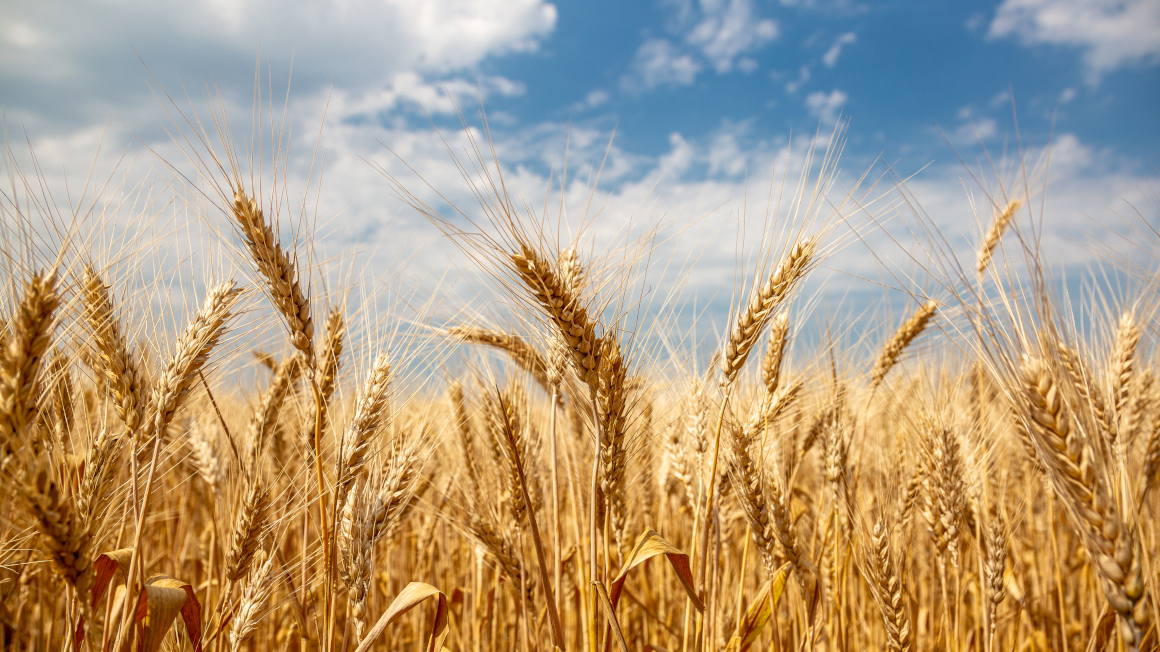“Uncovering the key signals of plants under water stress”
Christine ZieglerProfession:
PhD in biophysics and structural biology
Position:
Head of the Chair of Biophysics II and Director of the new Regensburg Centre for Ultrafast Nanoscopy at the University of Regensburg (RUN)

Profession:
PhD in biophysics and structural biology
Position:
Head of the Chair of Biophysics II and Director of the new Regensburg Centre for Ultrafast Nanoscopy at the University of Regensburg (RUN)

Christine Ziegler is researching how plants perceive water stress and the underlying mechanisms. The biophysicist was awarded the Synergy Grant by the European Research Council in 2023.
Plants need water to survive. However, climate change is making this precious commodity scarce and posing major challenges for agriculture. But how do plants perceive a lack of water and what are the underlying molecular mechanisms? Christine Ziegler is investigating these questions in her research work. As part of the HYDROSENSING project, the biophysicist from the University of Regensburg is looking for answers to these fundamental questions. The European Research Council (ERC) is providing 10 million euros in a so-called Synergy Grant for the six-year project.
What is the HYDROSENSING project about and what is its aim?
The HYDROSENSING project is investigating how plants perceive water stress and which mechanisms play a role in this. Ultimately, our interdisciplinary research project aims to decipher a potentially universal design concept that could enable us to efficiently counteract water stress in plants in the future. The aim of the project is therefore to close a very fundamental gap in scientific understanding in order to support the development of climate-resilient crops and strengthen global food security.
Why is it so important to understand how plants absorb water stress?
Water is essential for life on earth. Plants need water for vital functions such as photosynthesis, nutrient uptake, growth and development. Water shortages are an increasing problem in global agriculture due to climate change. Europe, for example, experienced the full force of water stress in 2022, with devastating effects on the environment, economy and society. Despite the enormous importance of water, it is not yet known how plants perceive its availability ("hydrosensing"), but this knowledge forms the basis for the development of climate-resistant plants. Only when the core mechanisms for the sensing of water shortage in plants have been identified and understood can the development of climate-resistant crops be sustainably advanced.
What role do roots play in coping with water stress?
Studies by our ERC Synergy team have shown that the movement of the water deficiency hormone abscisic acid (ABA) from the vascular tissues to the outer target tissues is a central signalling mechanism during water deficiency in roots and shoots. We hypothesise that this specialised cell type senses water stress-induced changes in hydraulic flux via perturbations in plasma membrane-cell wall contact that control the release of ABA. Investigating how these water stress responses control ABA movement from inner to outer tissues is particularly elegant to perform in roots, because water deficiency suppresses their lateral branching. In this way, genetic changes caused by mutations in roots can be quickly and clearly analysed phenotypically.
What methods and procedures are used to uncover the basic mechanism of water stress in plants?
We pursue an interdisciplinary, multi-scale research approach. We utilise novel technologies such as Stimulated Raman Scattering (SRS), Brillouin microscopy and innovative biosensors to reveal how water deficiency affects hydraulic flows. The missing components in the molecular mechanism of water sensing will be identified using an innovative multi-targeted CRISPR approach developed to overcome genetic redundancy. In combination with high-resolution cryo-electron microscopy, we will then formulate an integral water-sensing mechanism for root and shoot tissues, ranging from the molecular to the macroscopic level, to establish the conservation of common design principles across the plant kingdom.
What is your role in the interdisciplinary project?
My research group investigates the regulation of transport mechanisms across the plasma membrane. To this end, we determine atomic structures of membrane proteins such as secondary transporters and channels in different functional states using cryo-electron microscopic single-particle analysis. In the HYDROSENSING project, we will structurally and functionally investigate the interaction of plasma membrane proteins and cell wall kinases in order to uncover a molecular mechanism of hydraulic regulation and ABA signalling in plants.
How can knowledge of molecular processes help to make plants fit for climate change and thus secure the food supply of the future?
We will investigate the extent to which the key signals and molecular components are also conserved in crop plants. The new knowledge about the core mechanism of water sensing will be transferred to a variety of plant species using meta-genomic and structural modelling approaches in order to identify new targets for plant breeding. We will work closely with international plant breeding programmes. The HYDROSENSING project will also develop new technologies. For example, despite the high genetic redundancy in plants, the multifunctional CRISPR approach will provide breeders with a reliable selection procedure that will enable the targeted and significant improvement of water stress resistance in crop plants in the future.
Interview: Beatrix Boldt


